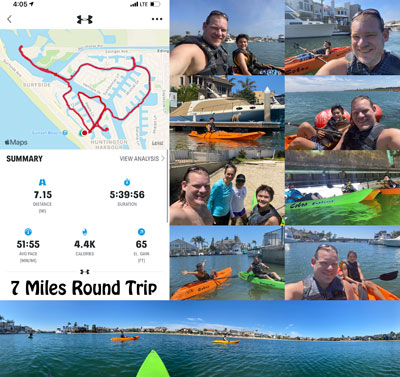Below are the requirements I completed for the Kayaking Badge. There weren’t actually any distance requirements for the Kayaking Badge, but we set a goal to do at least 20 miles.
Note: Click any image on this page to enlarge it in a new tab
ADDITIONAL REQUIREMENTS COMPLETED
In addition to the above, I also researched all the following areas and then completed a verbal presentation/interview to demonstrate my knowledge and understanding for each of them:
- Explain the most likely hazards you may encounter during kayaking activities and how to anticipate, help prevent, mitigate, and respond to these hazards.
- Review prevention, symptoms, and first-aid treatment for the following injuries or illnesses that can occur while kayaking: blisters, cold-water shock and hypothermia, heat-related illnesses, dehydration, sunburn, sprains, and strains.
- Review the BSA Safety Afloat policy. Explain to your counselor how this applies to kayaking.
- Successfully complete the BSA Swimmer Test.
- Review the characteristics of life jackets most appropriate for kayaking and understand why one must always be worn while paddling. Then demonstrate how to select and fit a life jacket for kayaking.
- Review the importance of safety equipment such as a signal device, extra paddle, sponge, bilge pump, flotation bags, and throw bag.
- Name and point out the major parts of a kayak.
- Review the differences in the design between recreational, whitewater, and
sea or touring kayaks. Include how length, width, stability, and rocker are
involved in the design of each type. - Explain the care, maintenance, and storage of a kayak.
- How to use a kayak paddle.
- Parts of a paddle.
- The care and maintenance of a paddle.
- In order to complete this badge, I need to kayak a total of 20 miles. I have now kayaked 27 miles and completed this badge one time.







